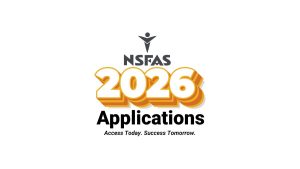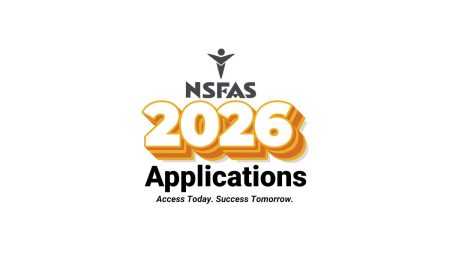In the journey to secure your NSFAS allowances for 2024, understanding the NSFAS Allowances Banking platform is a crucial step. Unisa has thoughtfully developed this platform to streamline the process of capturing your personal bank account details.
This ensures that your allowances and refunds are deposited directly into your account, facilitating a smoother financial management experience throughout your academic journey.
Let’s delve deeper into how you can effectively use this platform, monitor the status of your submitted information, and ensure a seamless disbursement of your allowances.
Understanding the NSFAS Allowances for UNISA Students
In a bid to ensure that financial constraints do not hinder the educational journey of UNISA students, NSFAS has outlined a comprehensive plan for the disbursement of student allowances in 2024. These allowances are designed to cover various costs associated with higher education, including learning materials, incidental expenses, and more.
The Disbursement Process
The process of disbursing allowances will officially commence on Tuesday, 19 March 2024. This marks a pivotal moment for students, as it signals the availability of financial resources to support their academic pursuits. The NSFAS allowances for UNISA students are divided into several categories, each tailored to address specific needs:
- Learning Material Allowance: Aids in the purchase of textbooks and other educational resources.
- Incidental Allowance: Provides financial support for daily living expenses, ensuring that students can focus on their studies without worrying about financial constraints.
How to Capture your Details on the NSFAS Allowances Banking Platform
The platform is specifically designed for Unisa students to input their banking details accurately and securely. Here’s a step-by-step guide to navigating this process:
- Access the Platform: Follow the link provided in your myLife email account to reach the banking details submission page.
- Enter Your Banking Information: It’s crucial that the bank account is in your name and verified against your ID number. Unisa has made it clear that no third-party banking details will be accepted or processed to ensure the integrity of transactions.
- Submit for Verification: Once you have entered your details, the submission will undergo a verification process with your bank.
Monitoring Your Submission Status
After you’ve submitted your banking details through the dedicated Unisa platform, actively monitoring the status of your submission becomes a critical next step.
This vigilance ensures that your financial aid disbursements occur without any hitches. The platform uses a series of abbreviations to inform you of your submission’s current status, each carrying significant implications for your NSFAS allowances. Understanding these abbreviations in depth will enable you to navigate the process more effectively and take appropriate actions when necessary.
Decoding the NSFAS Banking Details Platform Status Abbreviations
- SM (Submitted but Not Verified by the Bank): Your banking information is in the queue for verification. This status is the initial phase post-submission. It means the bank has received your details but has not yet begun the verification process. During this period, it’s important to ensure that all submitted information is accurate to prevent any delays.
- VI (Verified by the Bank): Achieving the VI status is akin to crossing the finish line. It confirms that your bank has cross-referenced your submitted banking details with your ID number and found a match. This verification is crucial as it greenlights the disbursement process for your NSFAS allowances. Once you reach this status, you can rest assured that your financial aid payments will be processed without unnecessary delays.
- RJ (Failed Verification at the Bank): Encountering the RJ status can be a setback, but it’s one that can be rectified with prompt action. This status means that there was a discrepancy between your submitted banking details and the information held by your bank, or an error was made during submission. Common issues include incorrect account numbers, the use of a third-party account, or mismatched personal information. If you find yourself with an RJ status, it’s imperative to review your submission for errors, make the necessary corrections, and resubmit as soon as possible to avoid delays in your allowance disbursement.
- UP (Updated by Student After Successful Verification): This status indicates proactive student engagement with the banking details platform. If, for any reason, you need to update your banking information after it has been successfully verified (VI status), your status will change to UP. This might occur if you switch banks, open a new account, or if there was a need to correct a minor detail. Post-update, your submission will undergo the verification process again to ensure accuracy and security.
Best Practices for a Smooth Verification Process
- Check Your Details Thoroughly: Before submitting, review your banking details meticulously to avoid the RJ status. Ensure the account number, bank name, and branch code are correct and that they match the information on your ID.
- Act Quickly on RJ Status: If you encounter an RJ status, immediately correct and update your banking details. Delays in correcting this information can lead to delays in receiving your NSFAS allowances.
- Regular Status Checks: Make it a habit to check the status of your banking details submission regularly. This will help you catch and rectify any issues promptly and keep track of your progress towards the VI status.
- Keep Your Contact Information Updated: Ensure that your contact details on myUnisa and with your bank are current. This will help you receive any notifications or instructions regarding your banking details submission and verification process.
Related: NSFAS Allowance Payments Schedule Per Institution
Frequently Asked Questions
Q: Can I update my banking details after they have been verified?
A: Yes, if there’s a need to update your banking details after they have been successfully verified (VI status), you can make changes through the same submission link. After updating, your status will change to UP (Updated by Student After Successful Verification), and your details will undergo the verification process again.
Q: What happens if I don’t submit my banking details or if my details are not verified by the deadline?
A: Failure to submit your banking details or not achieving the VI status by the deadline may result in delays in receiving your NSFAS allowances. It’s crucial to act promptly and ensure your banking details are verified to avoid any financial inconvenience.
Q: How can I achieve the VI status?
A: To achieve the VI (Verified by the Bank) status, ensure that the banking details you submit match the information associated with your ID number. Accuracy is crucial. Once submitted, your bank will verify the details. If everything is correct, your status will update to VI, indicating successful verification.
The NSFAS Allowances Banking platform is a critical component of the allowance disbursement process for 2024. By meticulously following the steps outlined and understanding the status abbreviations, Unisa students can ensure a hassle-free experience. This proactive approach not only secures your financial aid but also empowers you to manage your educational finances effectively.
Remember, the successful verification of your banking details (VI status) is your gateway to timely and efficient allowance disbursement. Stay informed, stay diligent, and look forward to a year of focused academic pursuit with the financial support you need at your fingertips.










